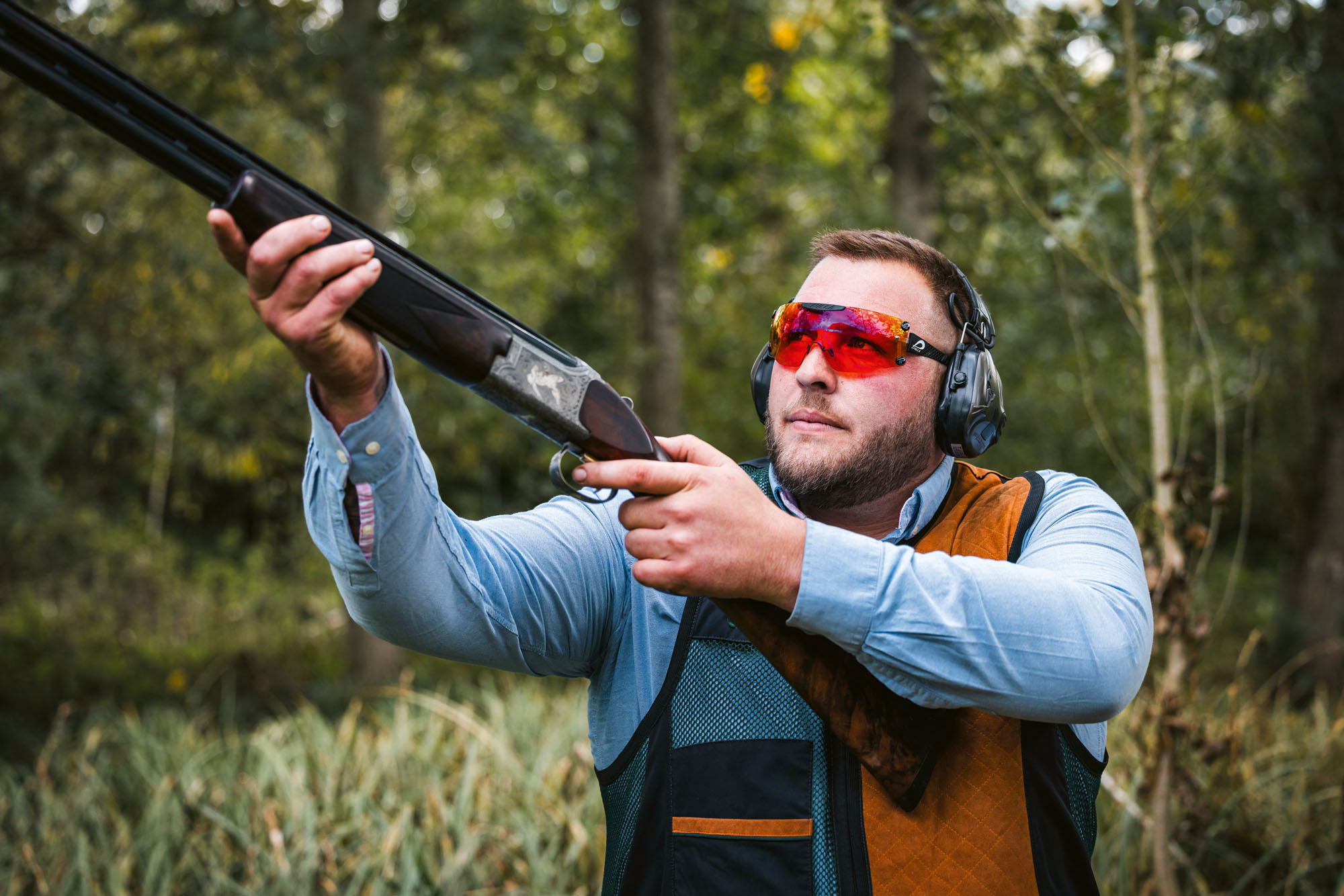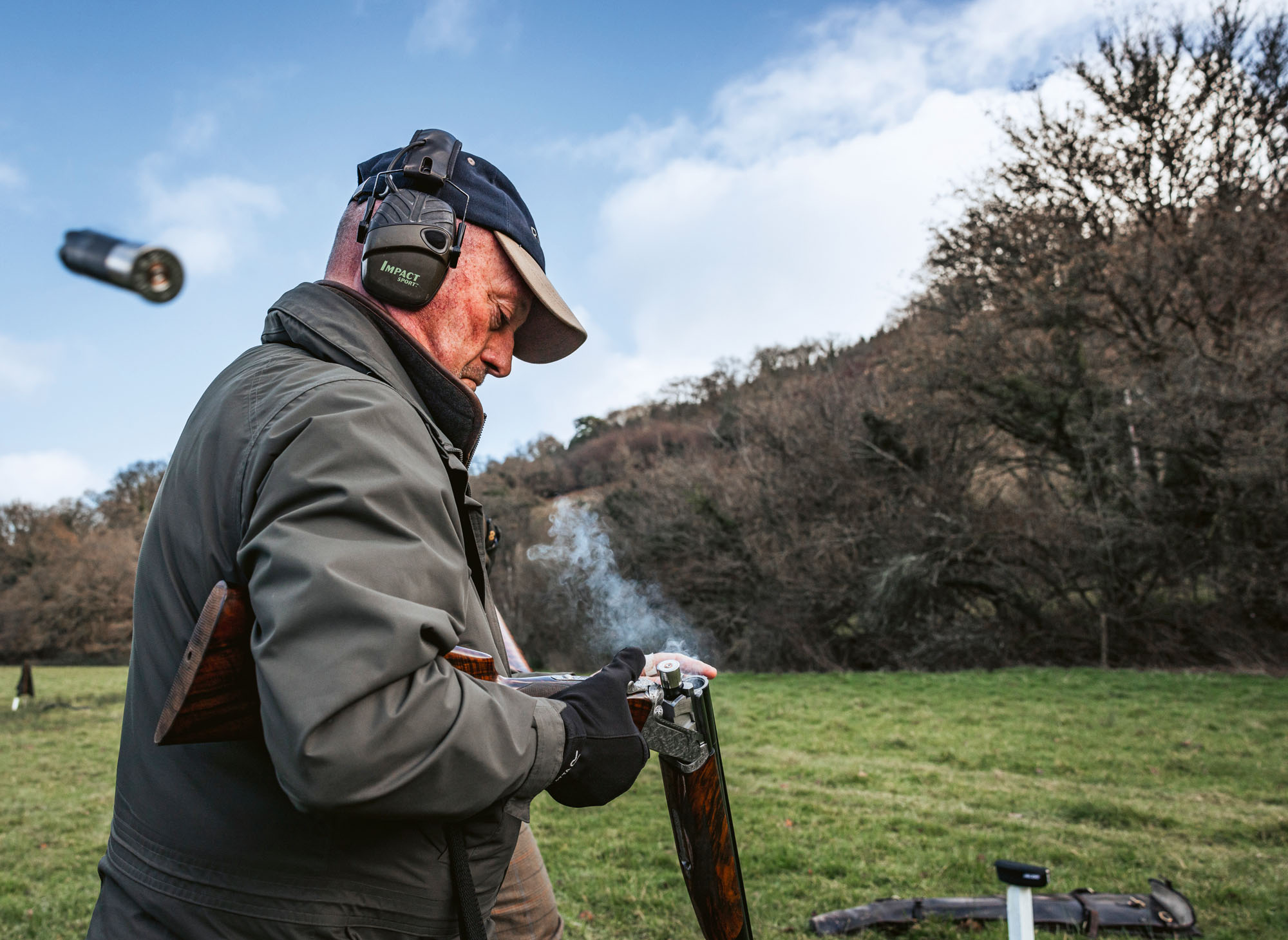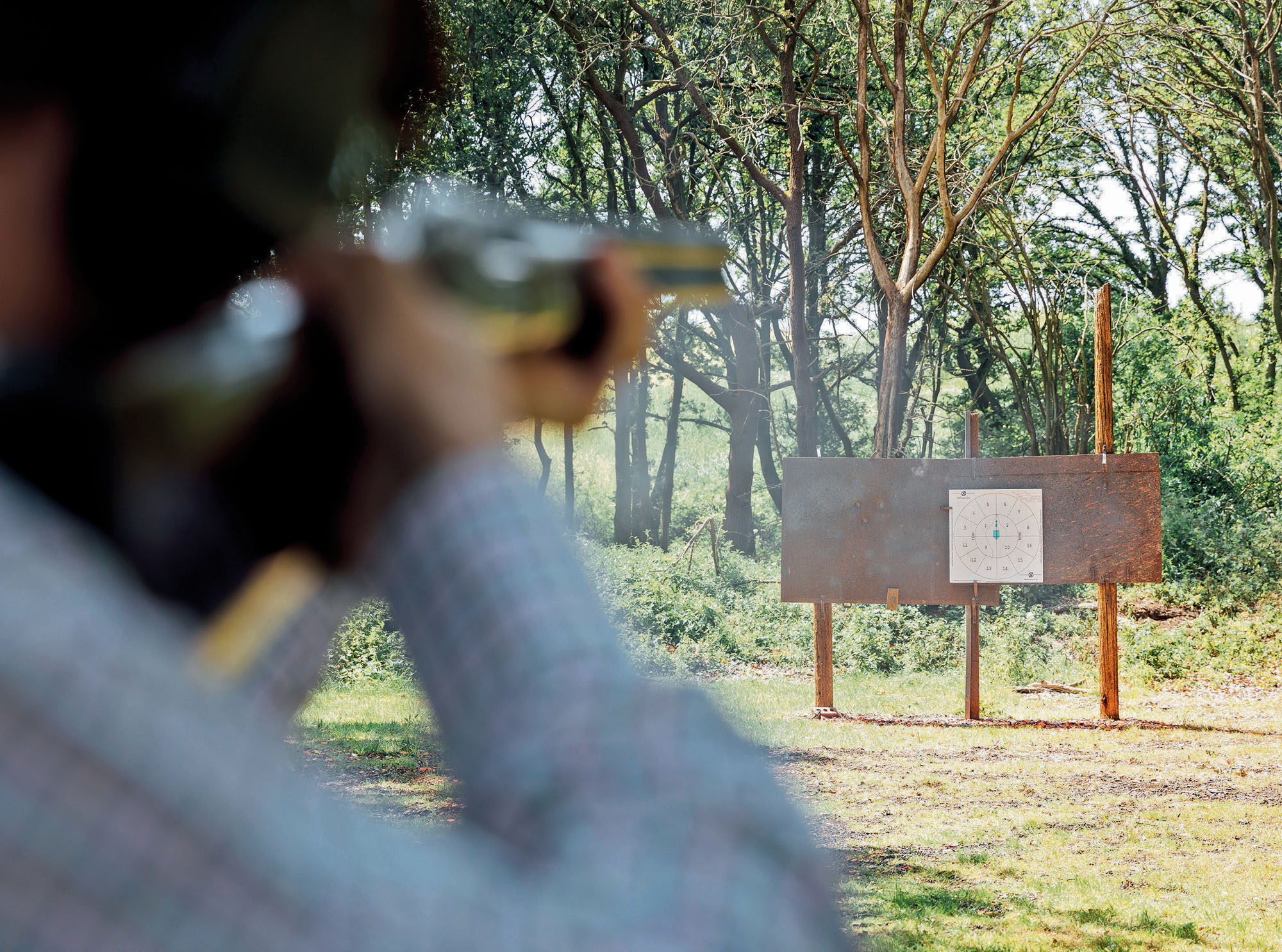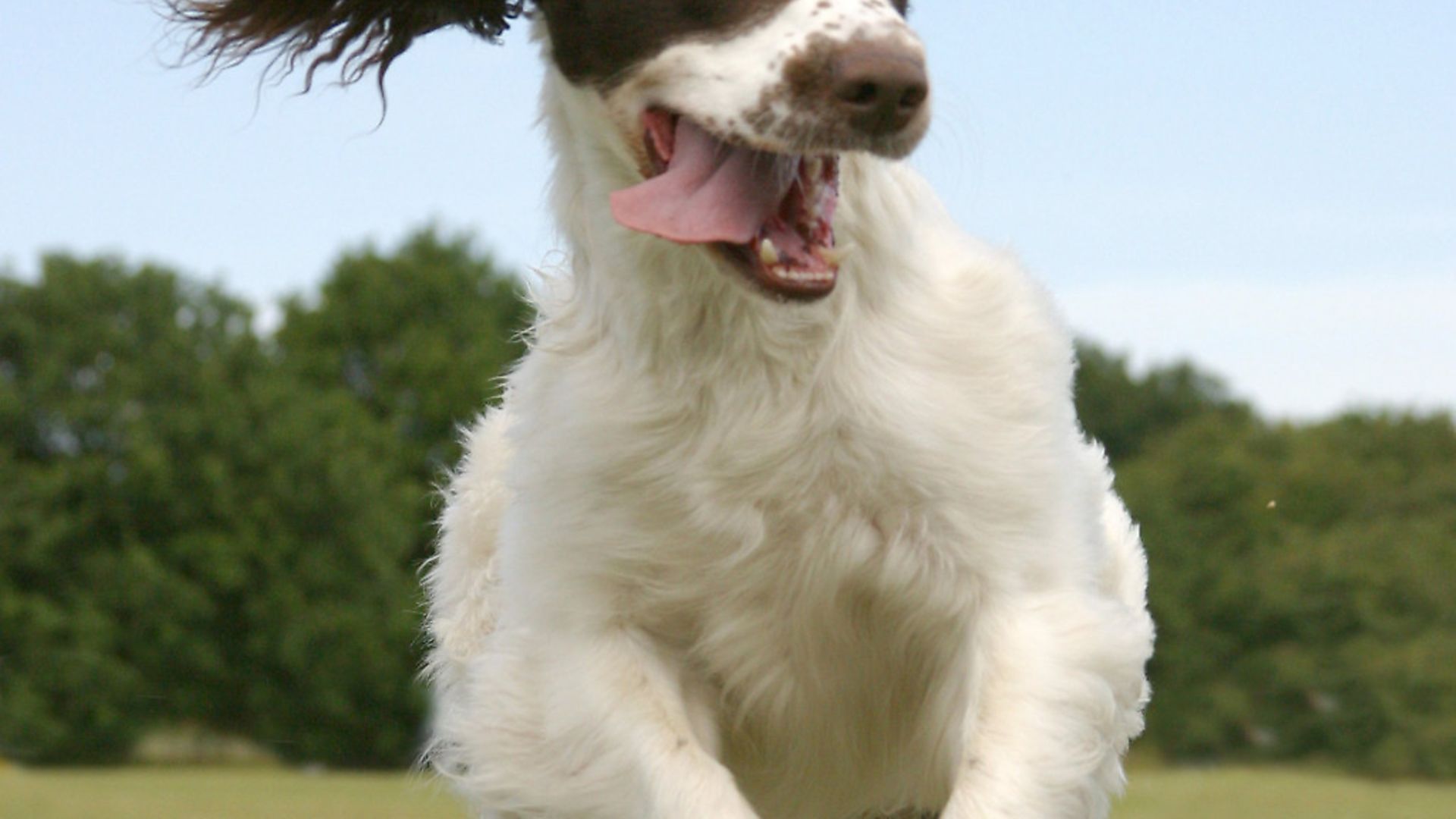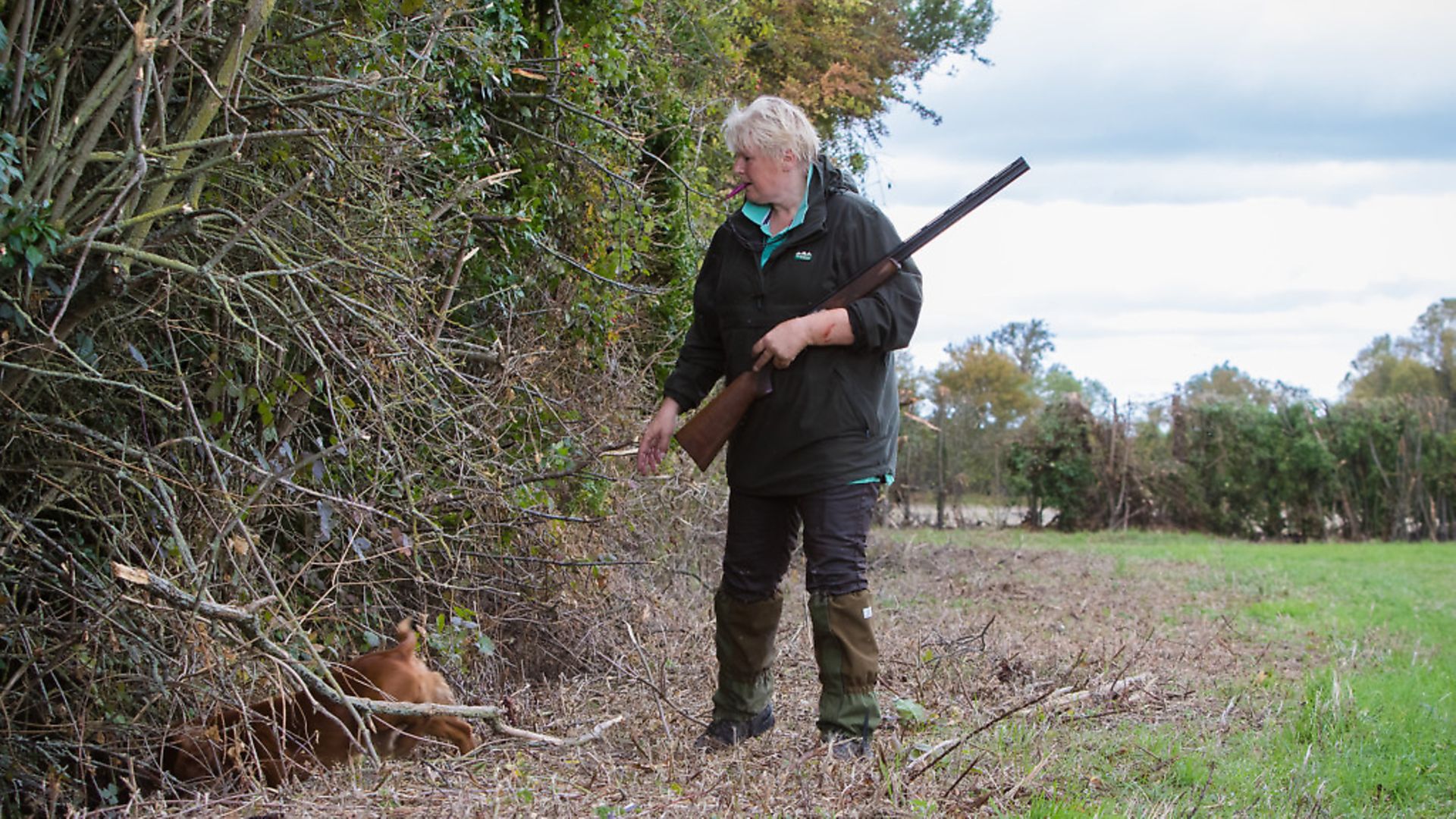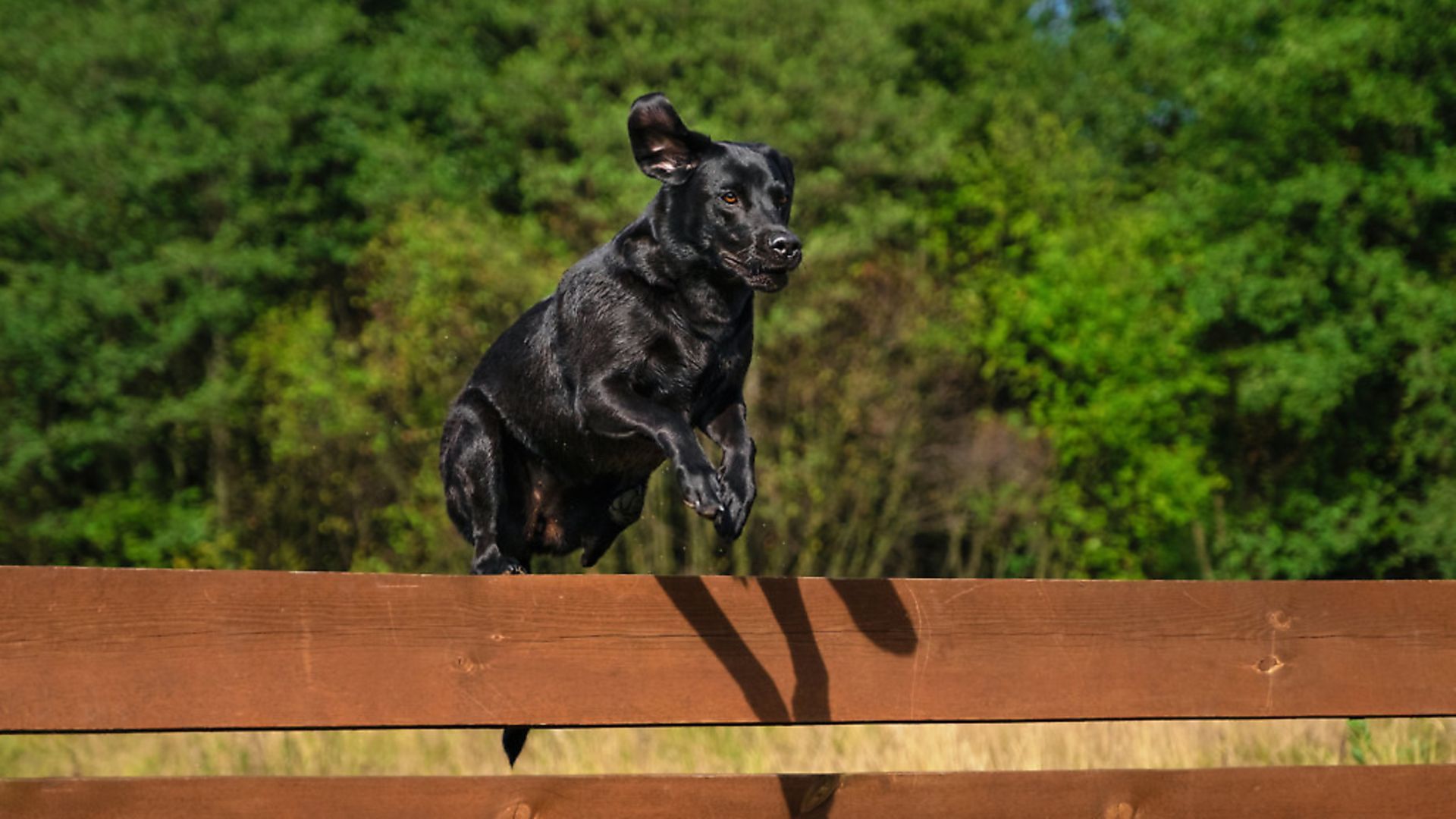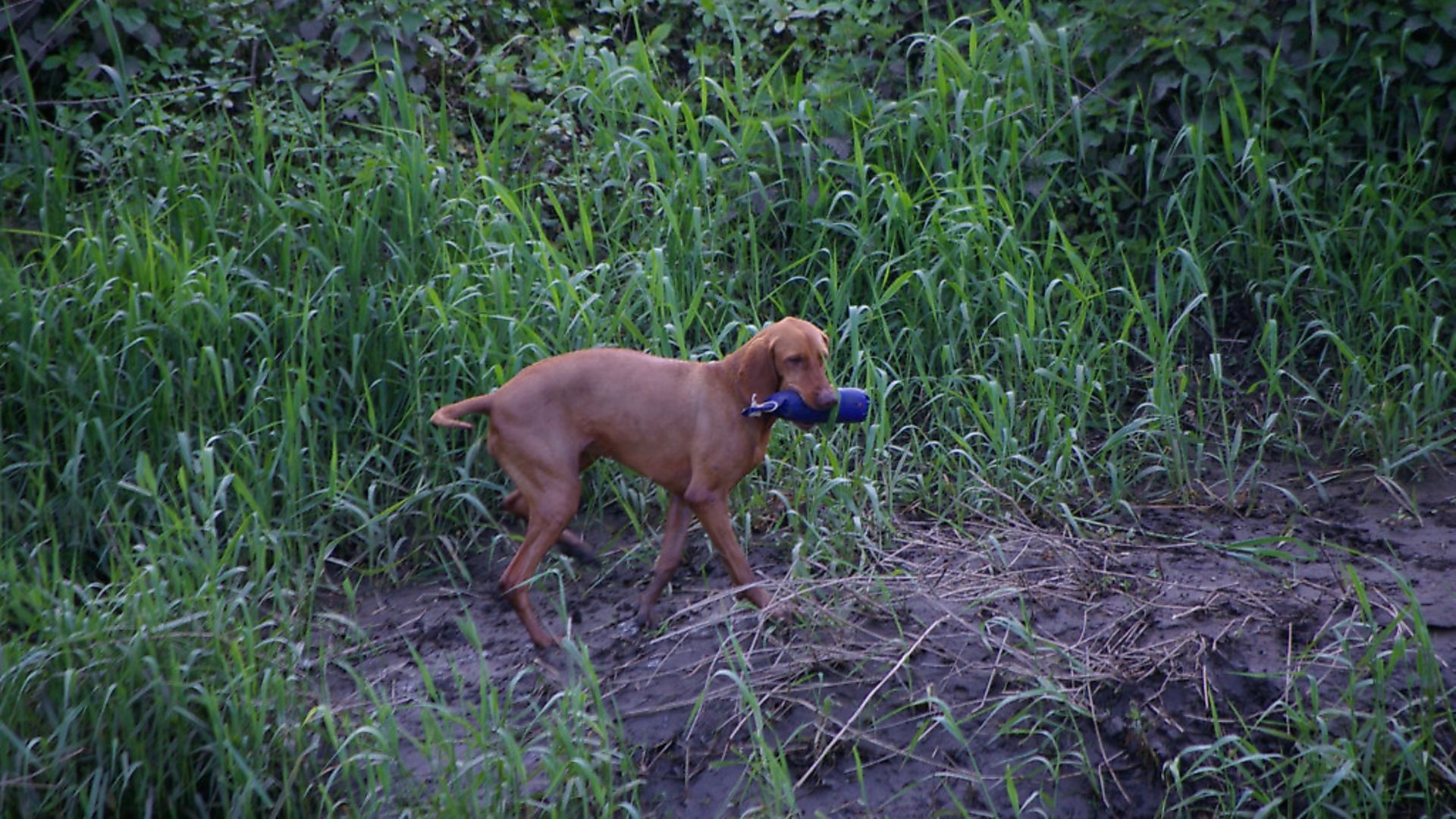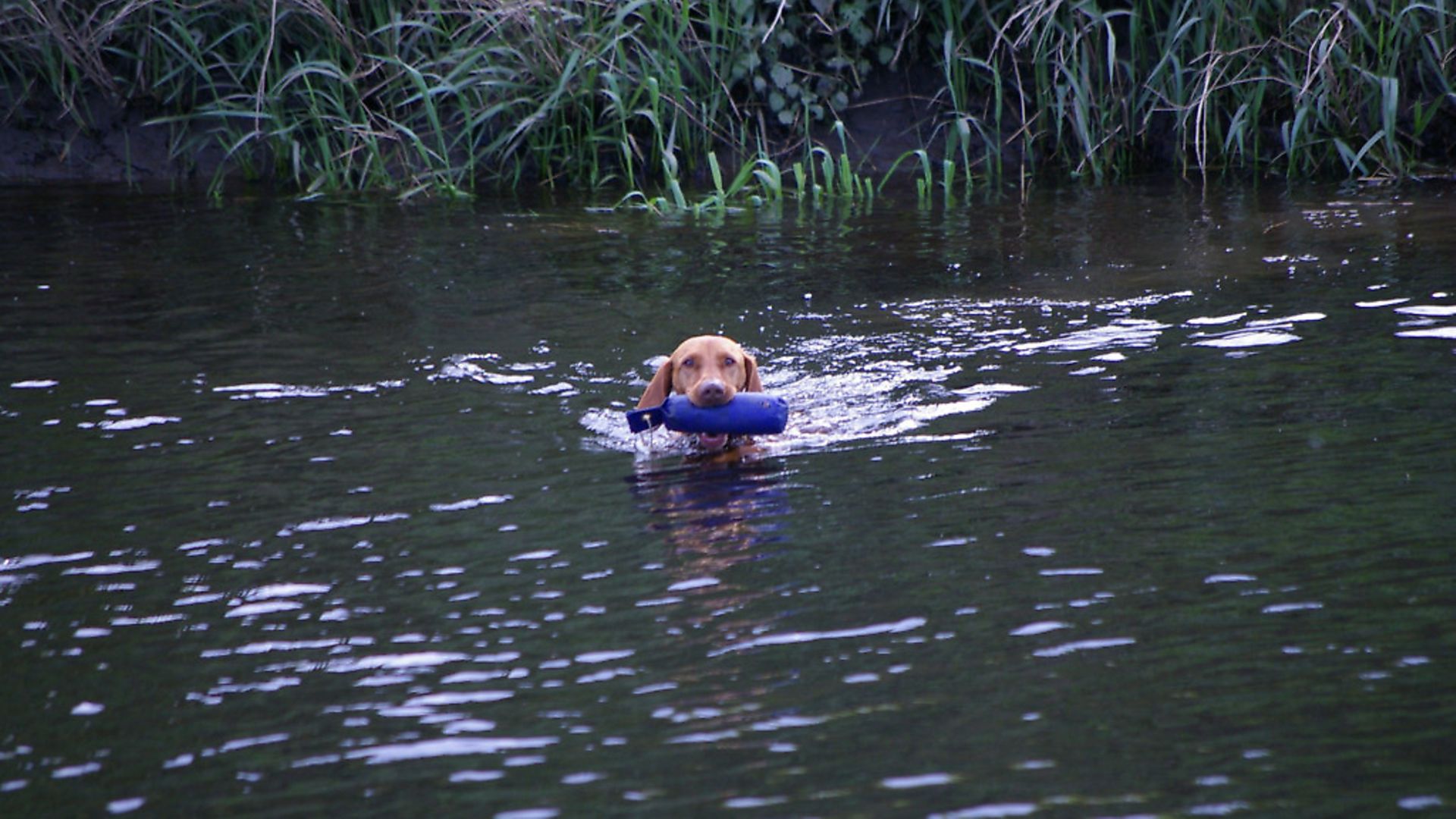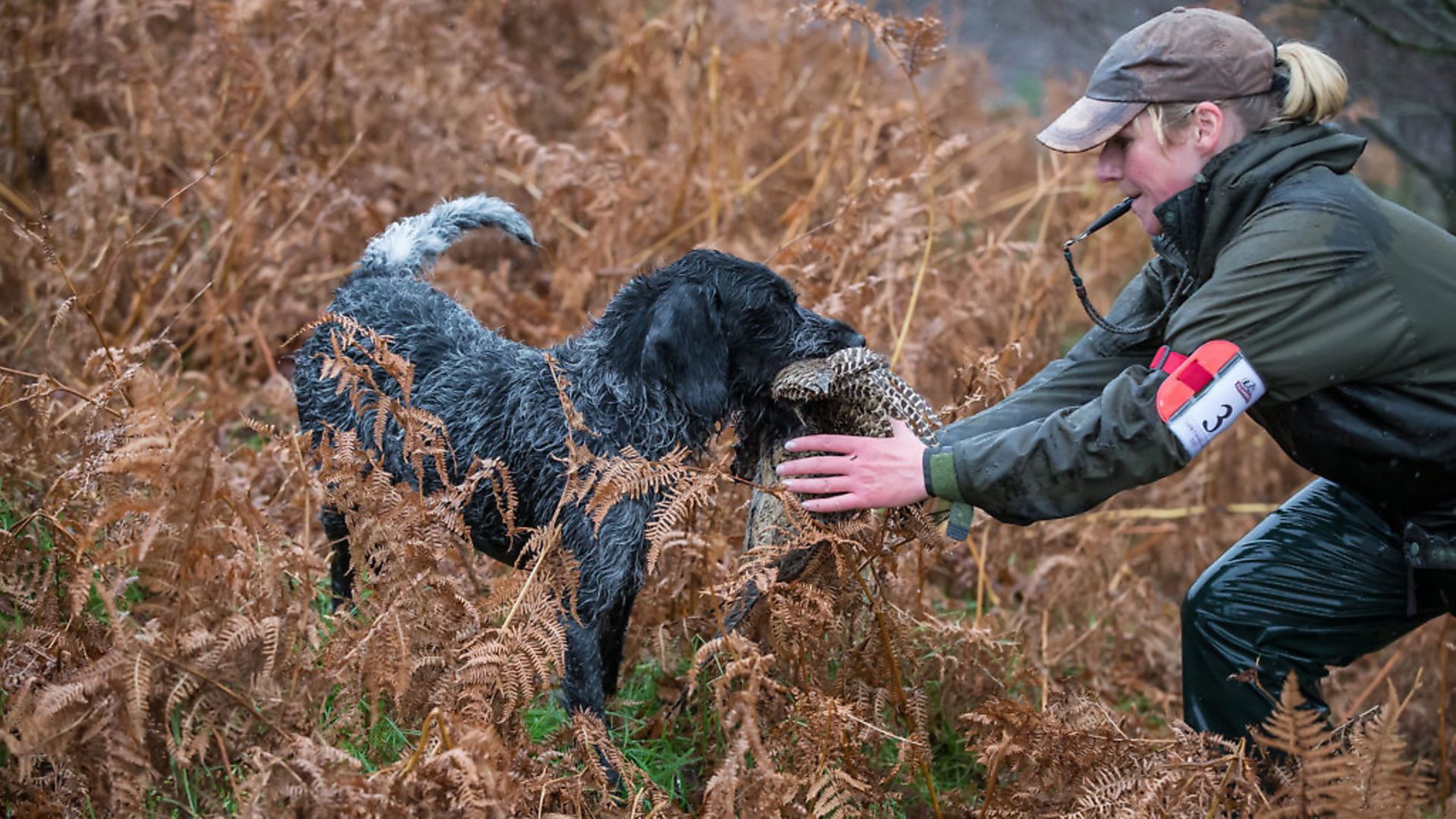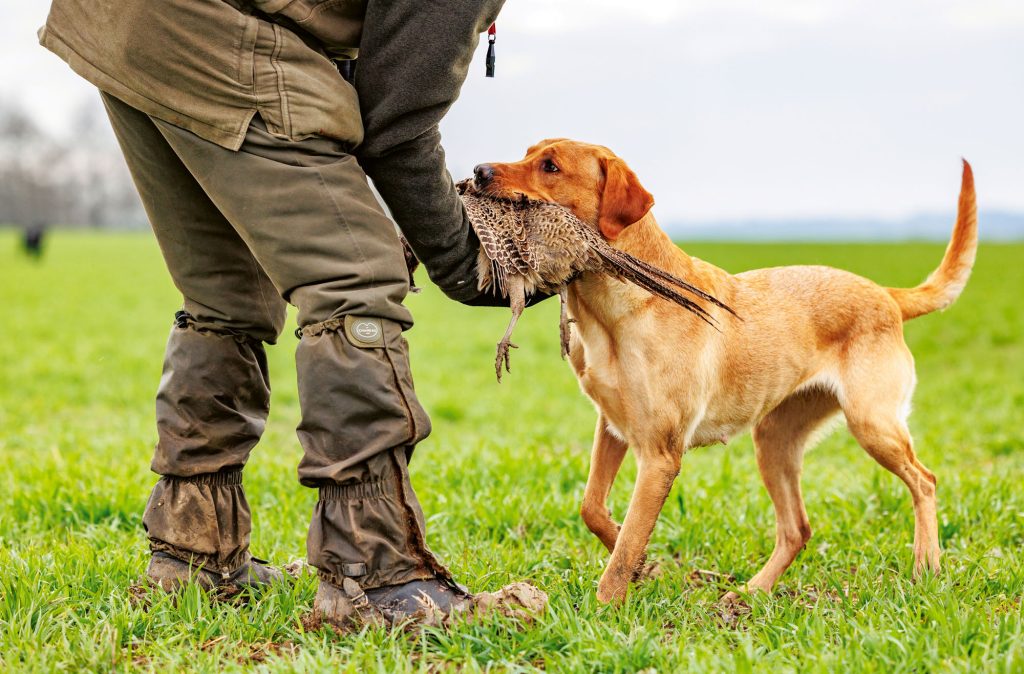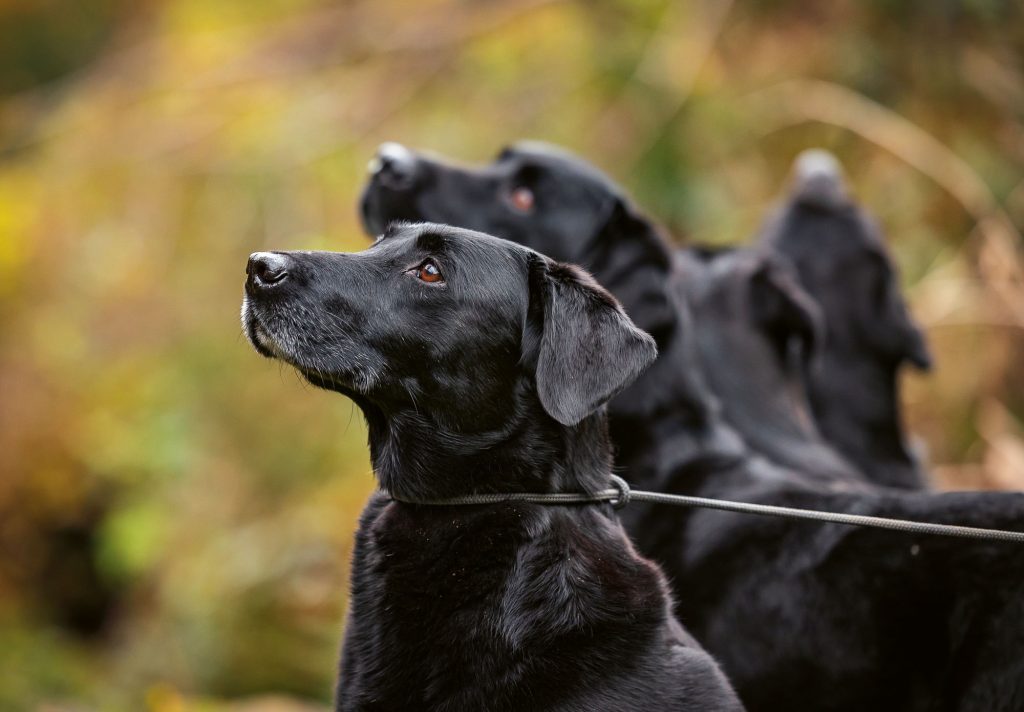Gundog training: how to cross obstacles
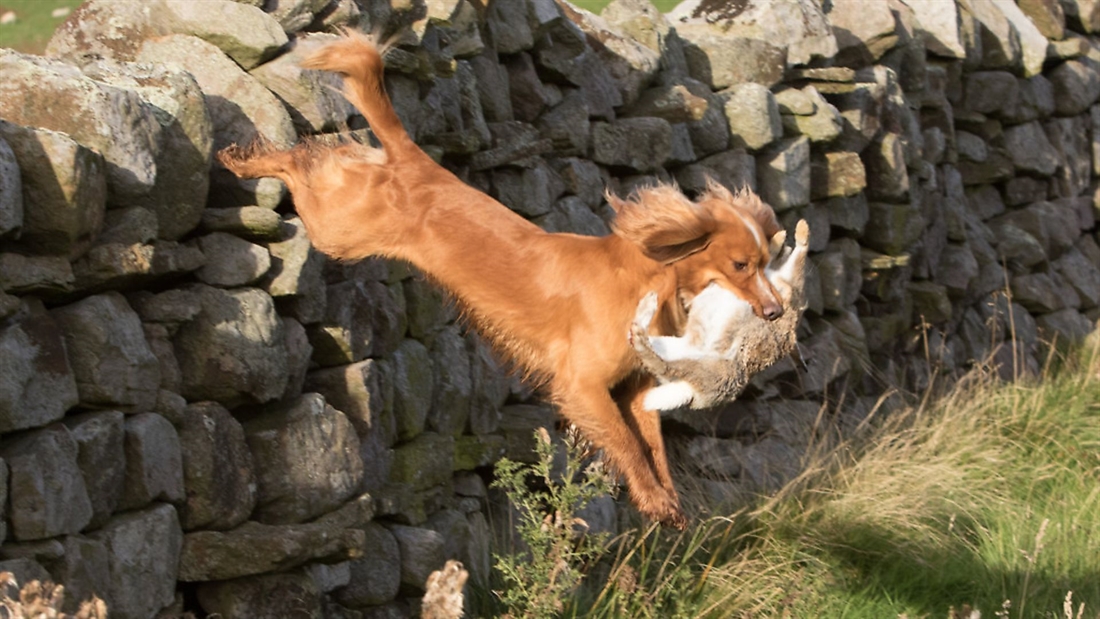
Your gundog will probably need to negotiate hedges, ditches, water and fences on a shoot day – Howard Kirby tells us how to train him to do so safely!
In last month’s article, we took a look at some ideas and techniques that you might consider using to develop a young dog’s retrieving skills. As you’re all well aware, dogs come in many shapes and sizes, but it’s also important to look beyond what the eye sees and understand each individual character.
It’s only when you assess the different aspects of these characters that you can really start to evaluate how, where and when you should train them. As trainers, this should be an essential part of the way we construct a training plan for our dogs. Unfortunately, one plan is unlikely to fit all.
Nature vs nurture
The natural character of a dog will need to be considered: a bold, brave and outgoing dog will probably need a very different training regime to a dog that is naturally shy, uncertain and reluctant to try new things.
The way we rear, manage, interact and train our young dogs can and will significantly influence a dog’s approach and outlook on life. This is the bit that we can most influence, so doing our best to evaluate a young puppy’s character can be really helpful in planning a way forward.
Nature versus nurture is a fascinating study and not one that I have time to look at in detail, but I would urge you to consider your dog’s strengths and weaknesses as you lay out your training plan.
So, let’s get stuck into this month’s subject: crossing obstacles. There are many obstacles that a gundog will need to negotiate when working in the field: fences, ditches, banks, walls, hedges, streams, rivers, lakes and many more. We need to give our dogs the opportunity to develop the skills required in order for them to successfully negotiate these.
A word of caution
Jumping fences is fraught with hazards, particularly for puppies and young dogs, so the general advice here is quite simple: do not encourage puppies to jump.
I would also suggest you take breed-specific advice from your vet or breed society before commencing any serious impact exercises. Some owners deliberately choose not to encourage any form of jumping ever, as the downside to teaching a dog to jump is that you may end up having to erect a Colditz-style fence around your house in order to keep the escapologist at home.
Once a young gundog is deemed to have developed to a suitable age, we can start to teach the dog to jump. Agility jumps are a real plus here as you can adjust them. Start low and slowly ‘raise the bar’! Small fallen tree trunks, bales of straw and small ditches are also opportunities for your dog to acquire the skills and confidence to jump safely. An open-bottomed wire fence is very difficult for people, horses and dogs to jump.
For the best advice, speak to an athletic coach, horse rider or agility handler. Your dog needs to learn to balance his speed of approach while adjusting his stride pattern in order that he can take off, clear the obstacle and land safely. The gundog breeds are remarkably athletic and can learn to be incredibly capable jumpers. Do it properly, otherwise you’ll break them.
How to start jump training your gundog
You should start with a really small jump. Encourage the dog to follow you as you step over the obstacle – providing the jump is low enough, the dog will achieve it easily. Go backwards and forwards a couple of times, turning jumping into an enjoyable game.
Once the dog is making easy work of the jump, you can then sit him up and pitch a small dummy over the fence, command the dog to fetch, then follow him to the fence.
As soon as the dog has the dummy in his mouth, gently tap the top bar of the fence and encourage the dog to make the return jump in the same place. Be careful the dog doesn’t run and jump straight at you – be sure to be offset from where you are encouraging the dog to jump.
Checklist for jumping
* Ensure approach and landing areas are safe.
* Keep jumps low, just six inches off the ground to start with (don’t ask your husband to show you how high this is!).
* Start really close to the jump – a couple of paces will be plenty. A speedy approach can lead to mistakes and injury.
* Don’t allow the dog to learn that he can just run around the jump to get to the other side.
* Don’t expect the dog to retrieve a dummy until he has first learned how to jump an obstacle.
Rivers and lakes safely with a gundog
An ability to swim confidently is the objective here. A careful introduction to water is important. We must avoid allowing the dog to launch itself into deep water and be frightened. Once scared, some dogs can be very reluctant to re-enter water. Unless your dog swims confidently, it will adopt a doggy paddle technique, which serves to create a lot of splash and pushes the dummy away from the dog, making it extremely difficult to collect.
We are aiming to teach a dog to enter water freely and swim to locate the retrieve either from water or out on the opposite bank or island. Having located the bird, the dog should return via the quickest and most efficient route. In competition, the dog must not put down and must deliver to hand. On a day’s shooting? Personally, I’d train for the same outcome.
Initially, throw dummies into water unless you’re lucky enough to have a small stream that enables you to send the dog across to retrieve the dummy from the opposite bank. I often see dogs that have been conditioned to expect to find dummies and game in the water… persuading them to go to the opposite bank is difficult. As soon as possible, get the dog to retrieve across water, thus building an expectation to get ‘the find’ from the opposite side. Of course, we need to teach the dog that sometimes the retrieve will be in the water, on the margins or some distance from the opposite bank.
If a dog is well schooled on land and you can handle it at distance, it will be obedient in the water. Reacting in the water by turning itself to look at you when you blow the stop whistle is hard work for the dog and it’s helpful to have a dog that will continue to push out on a verbal Back or Over command. This negates the need to catch the dog’s eye; that’s useful on land too.
As the distance across water increases, the help of an understanding assistant is really helpful. This assistant can throw marks, plant blinds and (either through well-orchestrated hand signals, or even better, a two-way radio) help to give you information should the dog be working out of the view of the handler. This will also apply when schooling a dog to go through and work on the opposite side of a hedge.
Hedges and field belts
Of course, a hedge can vary enormously, from an open-bottomed hawthorn hedge to an impenetrable barrier of bramble and vegetation. I’m going to base my advice on the former.
This is probably one of the more difficult skills to develop as it is highly likely that you will lose visual contact with the dog as it disappears into a hedge. A dog that is well schooled but has been allowed the opportunity to use its experience really comes into its own on these retrieves.
Start by walking a youngster through a gap in a hedge and let it see where you leave the dummy. Now return through the hedge before sending the dog back on a ‘memory’ to make the retrieve. If you, and most importantly the dog, can see through the bottom of the hedge you can throw the dummy over the top, ideally to the same spot. This marked retrieve allows the dog to make easy work of this second retrieve. If you have an assistant, they can now place a memory blind for you. To assist further, they could make a noise or fire a shot to help the dog to figure out that there is a retrieve to be picked. This memory blind will be the most difficult of the set of three.
This exercise can also be done by leaving three dummies out. The first time you send the dog through the hedge, it will be a straight memory. For the second and third, it gets progressively more difficult. Dogs are perfectly capable of learning this, but will need you to set degrees of difficulty that develop the dog’s understanding. Too difficult and you will serve to destroy confidence and performance.
There are many more exercises to further improve on all of these skills, but I hope this will give you a few things to think about! Have fun and Keeeeep Training!

